With its scenic islands, picturesque beaches, widespread tropical rainforests, and beautiful national parks, Thailand is the world’s 4th most-frequented adventure place. The scenic country has a diverse landscape and provides a natural habitat for an array of flora and fauna.
Thailand is home to more than 10% of the world’s animals including mammals, birds, and reptiles. From exotic animals to unique bird species, there is so much to see for animal lovers. But while you are visiting the Land of Smiles, keep an eye out for some dangerous animals.
Don’t let this list discourage you as we will share some tips to help you stay safe during your visit to Thailand.
1. Poisonous Snakes
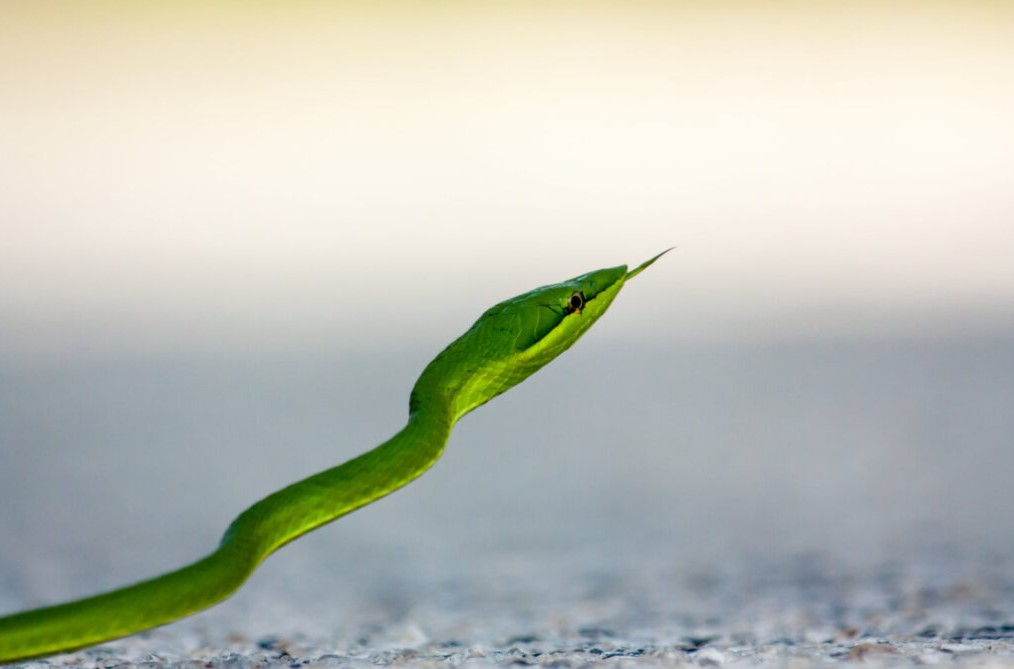
When in Thailand, expect to spot a snake in the country area, downtown, and urban Thailand. You may encounter one in grassy lands, canals, rivers, or any good hiding places like garages.
Be cautious. If there is a pit, a hole, a cavity, a snake is there!
You will see a variety of snakes from both harmless to venomous snakes, and passive hiders to aggressive attackers.
Some of the extremely dangerous snakes in Thailand are:
- Chain Viper
- Several types Krait
- Spitting Cobra
- King Cobra
- Coral Snakes
- Pit Vipers
- Several other types of Cobras
King Cobras are very commonly found in Thailand. They are easy to detect as they keep their heads raised and have a hood under the head. They are as big as 5 meters and may seem very scary. Don’t worry, they won’t attack unless they are threatened. Watch out for Baby King Cobra as they can be more dangerous than adults and can put loads of venom in the body when biting.
Stay far, far away from the Spitting Cobras. They can spit venom in the eyes from as long as 3 meters away. These super venomous snakes are super accurate at throwing. They deliberately target the eyes so the cytotoxins and neurotoxins from the venom can blind the threat.
Monocled Cobras are the deadliest snakes. They are more than seven feet long and are amazingly swift at striking. You may identify them by the round shapes on the back of their hoods. The victims of Monocled Cobras have the highest fatality rate.
Before heading out, wear bottoms that cover your legs. Also, wear long boots. If you must walk in tall grass, take a stick with you and keep hitting it on the ground.
On encountering, most snakes will run away. If they don’t, stay out of their path. Never attack a snake or try to scare it away. If it is an aggressive one, it will not go away and attack instead.
If you are bitten, rush to the nearest hospital or call for help. Don’t worry about identifying the snake. The hospitals in Thailand treat more than 7000 snake bites each year. So, you will be in good hands.
If help is too far away, wash the wound with soap and water, and tie a bandage above the area to stop the poison from spreading. Make sure you don’t tie it too tight to block blood flow.
2. Giant Centipedes
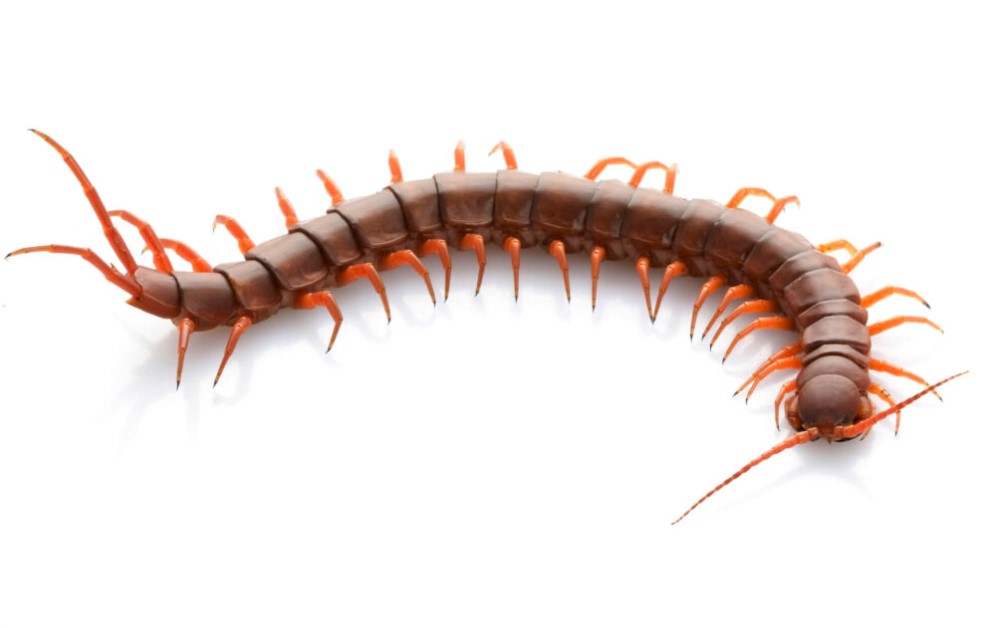
As big as a man’s forearm, the giant centipedes can seem very daunting. You may find them both indoors and outdoors hiding under rocks or logs or sneaking in your shoes or clothing.
In Thailand, most commonly found centipedes are:
- Chinese Red Headed Centipedes
- Asian Forest Centipedes
If you encounter one, stay away as it will most likely bite you. Giant centipedes have specially adapted front legs that act like pincers to inject venom. A centipede’s venom is not fatal, but it hurts really bad.
A centipede’s bite-mark resembles that of a snake. If you get bitten, expect to be in immense pain for the next few days. It is recommended to visit a hospital instantly. You will be treated with pain killers and anti-tetanus, as required.
Depending on the envenomation, a medicine may or may not fully help in treating the pain.
In case that help is too far away, wash the bite mark with water. To soothe the pain, you can use ice.
Thank God for their huge size, the giant centipedes are really easy to detect and avoid in day-time. But be careful during the night. To avoid getting bitten by centipedes, don’t walk without shoes. Always give your shoes and clothing a light shrug before putting them on.
3. Scorpions

Scorpions look so scary but most of them are harmless. Even in Thailand, the scorpions are mostly harmless. Black Scorpions are the most commonly found scorpions in Thailand. If they do sting you, the sting will feel like a bee sting.
In Thailand, the scorpions are sometimes as big as a hand. It is believed that scorpions are attracted by the smell of stale beer.
Scorpions are nocturnal creatures, so you may not find them in the daylight. However, if you are interested in looking at some, you may try finding them at night. Use a UV light, and you will detect them fast due to their fluorescent bodies.
In case you get stung by a scorpion, get treated. The poison may not be deadly but there is a great chance of infection or an allergic reaction if untreated.
Head to the hospital to avoid any complication, and you will be treated with anti-venom and anti-tetanus. You can also use ice packs to reduce the pain.
4. Jellyfish

While swimming in the Thailand waters, watch out for these extremely dangerous creatures. Jellyfish can be very dangerous.
Most jellyfish are blue or clear(transparent), this makes the indistinguishable in the water. They have 15 tentacles which are almost 10 feet long and have more than 5,000 stingers.
On stinging a person, these stringers release venom in the victim’s body. The venom then triggers a chemical reaction that attacks the nervous system and the heart of the victim.
Box Jellyfish are very dangerous. There have been incidents when a victim couldn’t make it to the shores because of a heart attack in reaction to the sting.
Jellyfish don’t like a bright sun. So, to avoid them swim on bright sunny days. Moreover, avoid swimming after a storm. If you do get stung by a jellyfish, don’t use water as it will burn and hurt more. Remove the jellyfish from your skin carefully, and then rinse the area with vinegar. Vinegar will neutralize the pain.
If the pain doesn’t reduce, or the sting was in a larger area of the body, then head to the hospital. Sometimes, the stings may leave a nasty scar.
5. Coral

The coastal waters of Thailand are home to some dangerous sea creatures. So, stay safe when swimming or snorkeling.
Swimmers and snorkelers may encounter dangerous corals in Thailand. Dead corals are sharp and may scratch or hurt your skin. But watch out for the live ones. Live corals are stingy.
The sting of the corals is similar to that of Jellyfish in pain. While they aren’t deadly, the stings of live corals may spoil your vacation.
In case a live coral sting you, use vinegar o neutralize the pain and visit a hospital for comprehensive care.
6. Rockfish

Call them Rockfish or Scorpionfish but stay away from these dangerous sea creatures on your trip to Thailand.
The Scorpionfish are great at camouflage due to the markings of their bodies. They sneak around and hide in rocks, hence the name.
Rockfish have stings on their body which they use to inject venom in the body of their prey. They then swallow the prey.
The venom is not deadly for humans, but if you get stung it will be very painful. A sting by rockfish may cause numbness, swelling, and bleeding. If untreated, it may get worse and result in seizures, vomiting and breathing problems.
Rockfish can swim to the shore and stay without water for a few hours. If you find one on a beach, stay away from it.
7. Red Lion Fish
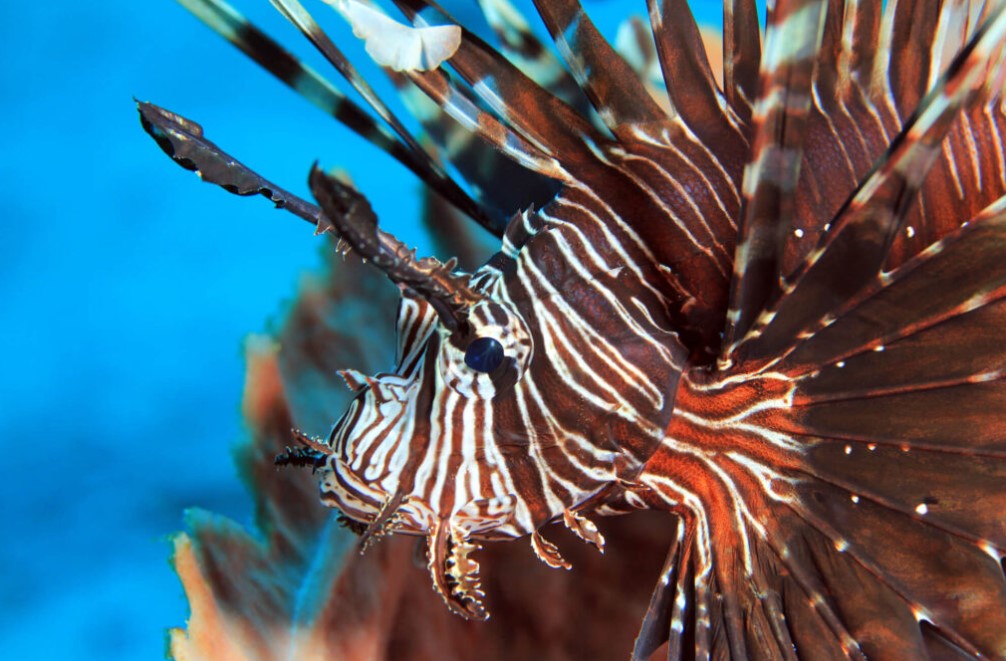
Red Lion fish are another venomous sea creature you may encounter in Thailand.
Also called, Dragon Fish, it is beautiful and scary at the same time. The body of the red lion fish has red and yellow stripes on it. moreover, its 18 dragon dorsal fins can seem daunting.
Their dorsal fins are poisonous and may target animals of prey and careless humans. The venom is not fatal but may be very painful and cause nausea.
Swimmers, divers, and snorkelers should be cautious around corals and sea rocks to avoid red lion fish.
The red lion fish can be very aggressive if you disturb them. They are very fast and can attack swiftly.
8. Dogs

You might be surprised to see this on our list. But street dogs are a great problem for most tourists in Thailand.
Street dos or Soi dogs as called in Thailand are free dogs abandoned by people. Out of 8.5 million dogs in Thailand, 7,30,000 are soi dogs.
These dogs can cause serious health implications. They can be found everywhere wandering on the roads, or at night sleeping on the roadsides.
Sterilization programs started and failed many times. Eradication is out of the question because of the respect for Buddhist life in Thailand.
They are not a threat most of the time. But if threatened, they may attack and bite. Stray dogs wandering in packs at night may also get aggressive and pose a risk.
Stay away and avoid stray dogs. If you encounter an aggressive one, retreat while looking in the eyes. You can also use a stick or stone in your defense. This is very common in Thailand.
In case you get bitten, seek medical assistance. Rabies is very widespread in Thailand. So be careful and see a doctor.
9. Monkeys

Thailand is home to a large variety of cute but dangerous monkeys. The most commonly found are macaque.
Don’t be fooled by the small sizes and cute looks of these monkeys. Macaques can be very aggressive. In Thailand, there are reports of monkey bites and monkey attacks all year.
Most monkeys in Thailand will try to get a snack from you. They can be intimidating sometimes especially for children. The monkeys are great at stealing things and ripping the packaging.
The government has put signs warning people to beware of the monkeys. In case you are bitten by a monkey go to a hospital immediately. Like dogs, monkeys are also spread Rabies.
10. Leeches

Leeches are very common in Thailand, in water and outside. They are found in still waters and wet vegetation.
If they detect a disturbance in the water, they swim to it. Outside, they can detect an animal or human presence, and start moving towards the source.
On coming into contact with the skin, they attach themselves and start sucking.
Leeches have a little sucker and little head probes that penetrate the skin. They use their tiny sharp teeth to open the skin, and then the head probes penetrate it and start sucking blood. They suck and store blood until they become seven times the size of their bodies. Then they leave the body and dropdown
Leeches use a natural anti-coagulant to keep the wound bleeding. Therefore, even after they leave the wound may keep bleeding for hours.
11. Roove beetle
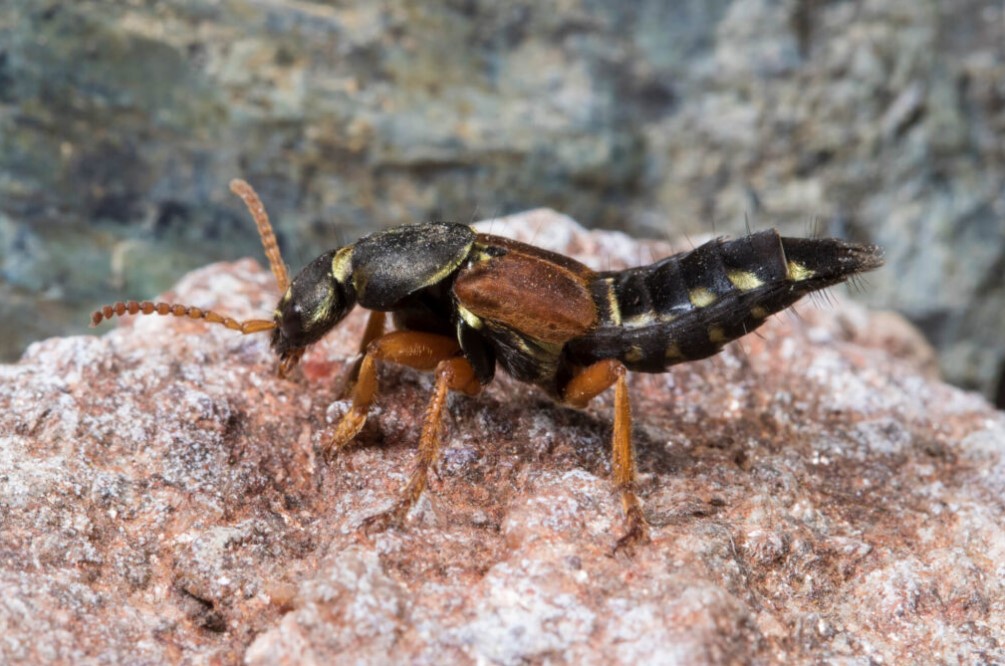
The beetles from the family Staphylinidae are members of the Rove Beetle clan. They are recognized by their short wings that don’t cover their abdomen.
In Thailand, Rove Beetles are very common. These tiny insects can cause Paederus dermatitis. Roove beetles don’t bite or sting but on contact or brushing, they can cause this skin irritation. On coming into contact with skin, they release a skin blistering chemical called coelemic fluid which irritates.
The irritation won’t appear immediately after contact. It may take 24 hours to notice the redness. The worst part is that the blisters spread all over the body. It is recommended to avoid contact with the blisters, and wash hands frequently.
If the rash travels to eyes or genitals, it can lead to serious problems. So, don’t wait to consult a doctor. You may also find tropical medicine from a local pharmacy.
12. Mosquitoes
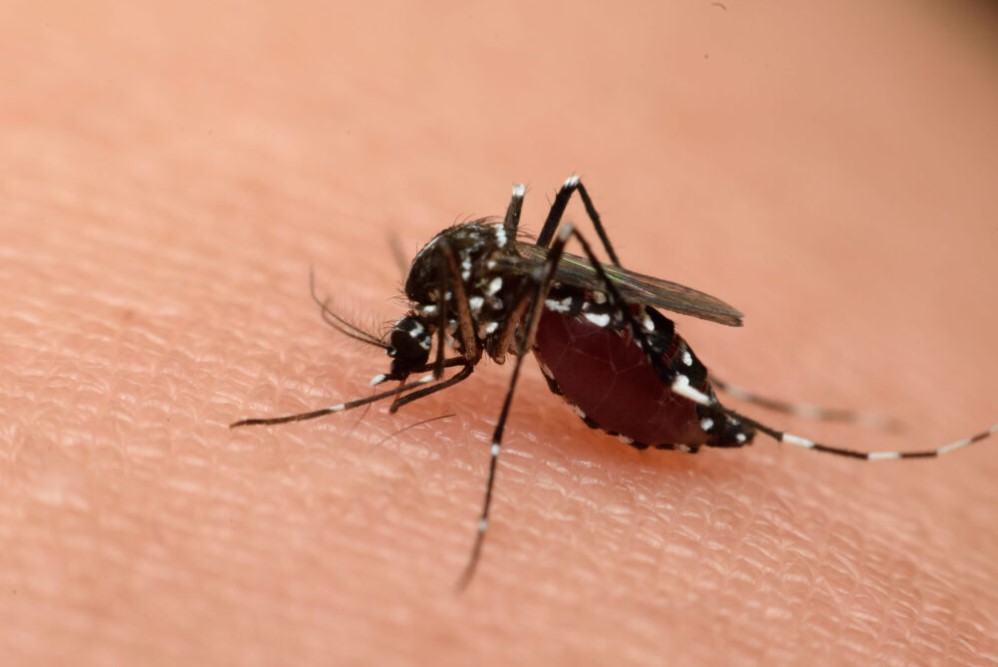
Mosquitoes are another big threat in Thailand. Other than the causing diseases, these mosquitos can cause a lot of irritation and spoil your vacation.
It is recommended to use mosquito repellent as Dengue, Malaria, Fever, and Japanese Encephalitis are very commonly caused by mosquitoes.
Mosquitoes aren’t a fan of sunlight, so you may not have to worry in the daytime. However, they hide in shady places, grassy lands, and under tables. Wearing clothing that covers your body may help. In the night, the mosquitoes are on the hunt. If you are sleeping in an open space, or a hut, use a mosquito net.
In case you get bitten, you may find topical creams at the local pharmacy that can help in the pain and swelling.
13. Ants

Beware of these tiny attackers in Thailand. They can bite and cause problems much, much bigger than their size.
In Thailand, you will more species of ants than anywhere you have ever seen. The larger ones will bite and cause irritation and swelling. But the tiniest ones are more dangerous. They release allergens and poison on biting.
To stay safe, keep removing food leftovers. Don’t leave anything outside. If food falls on your clothes, change right away.
In case you get bitten use a topical cream from the local pharmacy to give some relief.
14. Spiders

Despite their scary looks, most species of spiders aren’t dangerous. But no matter how few they are, the dangerous species can be venomous.
In Thailand, the most dangerous spiders are forest dwellers. They are aggressive and bite swiftly. Their bites can introduce poison in the human body. It may cause irritation, pain, swelling, and exhaustion.
In case when someone is allergic to the substances, an allergic reaction may be triggered. It can get worse if left untreated.
You can an ointment from the local pharmacy or head to the hospital where you will be treated with anti-venom and anti-allergy. There are thousands of patients of spider bites in the hospital every year in Thailand.
To avoid the spiders, give your clothing a good shrug to get the sneaking ones out.
15. Poisonous Caterpillars

Some caterpillars can be very dangerous in Thailand. These tiny insects have brightly-colored bodies and are covered with tiny, poisonous hair.
The caterpillars eject their venomous hair in the surroundings. If you get in contact with them, you may experience irritation and pain. Some species are so dangerous that their hair can kill smaller animals.
Also called Buung Haan by Thai people, caterpillars are something to watch out for when in Thailand.
Final Word:
A wise traveler is a prepared traveler. Don’t let this information keep you from visiting the beautiful ‘Land of Smiles’. Dangerous animals can be anywhere. Now that you know what you should be cautious of, and what to do in case of an encounter, you will be better equipped to deal with an unfortunate situation. Remember to get travel insurance as a visit to a hospital may be very expensive. Keep your regular medicines with you, and get some tropical creams like ‘Tiger Balm’ that is a local favorite in Thailand.
